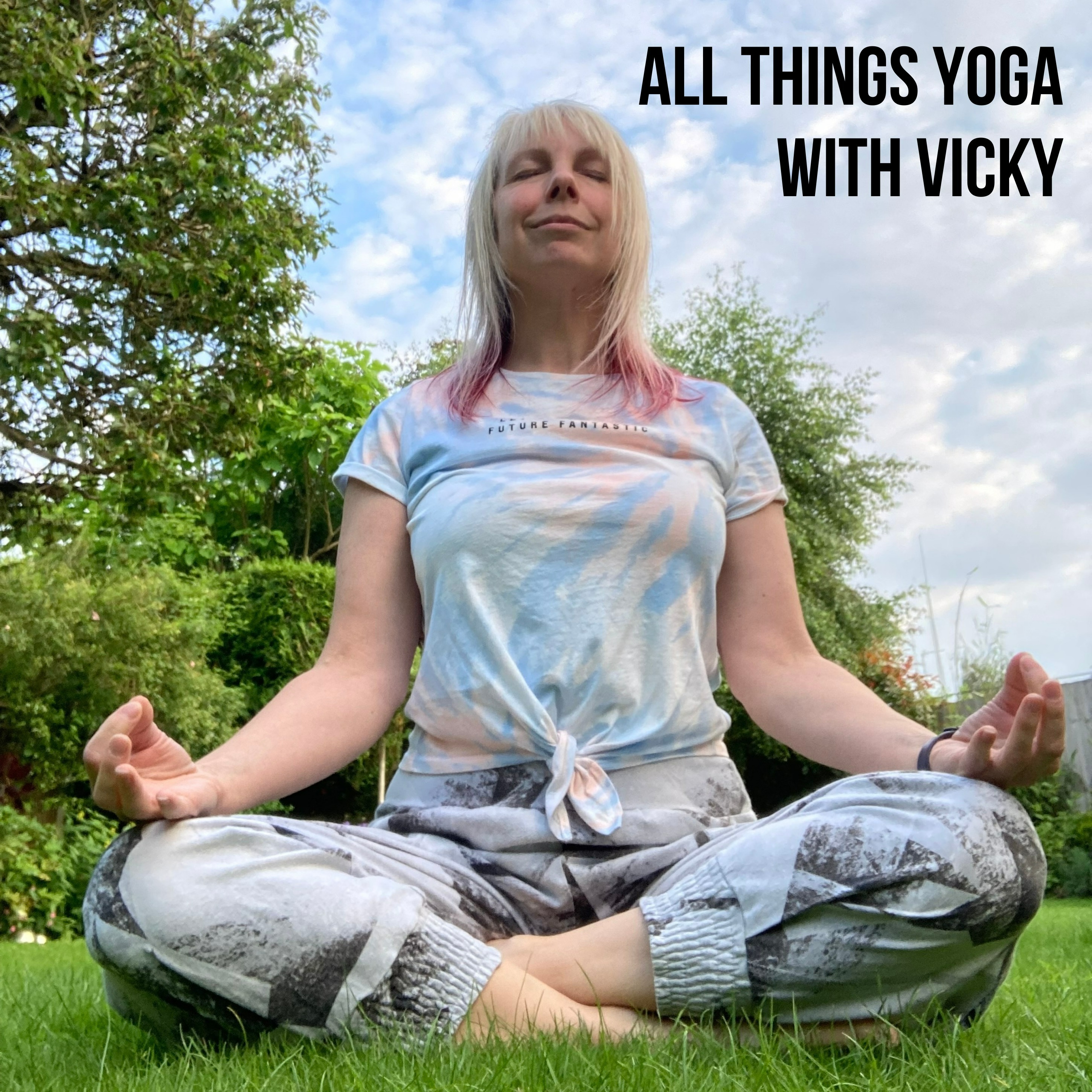We are all Unique
In this episode we explore the idea that bodies are all different and how learning about your own body is far more useful than we may realise.
You can practice with me at eqyoga.co.uk
Vicky (00:00:03) - Hi, welcome to All Things Yoga with Vicky, a podcast about all things yoga. Today we're going to speak about different bodies and expectations of our bodies. Now, if you've been listening to my podcast, you may. By now I've got the idea that I'm very keen on fitting yoga poses to our bodies, rather than making our bodies fit the poses. Now, recently, actually for about a month, I've been seeing adverts on social media about stretching apps and stretching programmes that show these amazing photos of people struggling to touch their toes in May and then being folded forward so tightly they could fit in a suitcase in August. Now, these apps promised amazing improvements in flexibility in a really short time. And under the posts, there are a plethora of comments from people saying how amazing these programmes are and how well they've worked. Now, can this really be true? Can we go from zero to be in a stretch in a hero in three months? Let's explore why things may not be all they seem here.
Vicky (00:01:17) - So, as you may be aware, part of yoga teacher training is looking at anatomy, how bodies work, and also the makeup of our bodies. And it becomes very apparent that the pictures that we see in books showing bones and muscles are not representative of everyone. In fact, very few bodies will look like the textbook diagrams. We are all unique. Genetics, bone formation, muscle structure, past injuries and daily habits ensure that we are. You are unique just like everybody else. Now these differences in each body mean that it may be possible for one person, but impossible for another person to get into a certain position.
Vicky (00:02:08) - For example, the picture of the amazinging forward fold in the episode pic would only be possible if your bone structure in your hips allows for it. If you were to look at the X-ray of a few different people's hips, you would see massive variations in how the bones look, almost as if they were from different creatures. For some people, there will be nothing stopping a deep forward fold at the hips, but for others, bone will meet bone even with a small forward fold, and that means that they will never reach that nose to knee version that we can see in pictures.
Vicky (00:02:44) - It's important to say that this is no reason to despair. There are no prizes for touching your toes or fitting yourself into a suitcase. So in light of this information and our physical differences, I feel that such programs and apps may be offering false expectations, especially as an app doesn't take into account how your particular body works. In fact, there's a very real risk of people pushing to achieve the results that they're expecting and causing injury in the process. Not to mention that feeling of being disheartened when they don't manage to fold themselves in half. Our bodies are amazing. No matter what their makeup or what they look like, it's time that we started taking more notice of our own bodies and how they work and how they feel comfortable. If sitting cross-legged doesn't feel good for you, don't do it. Find your own way of sitting comfortably. If a traditional child's pose feels more awkward than relaxing, practice your own version or something. That's an alternative. We can get to know our bodies better by experimenting. One simple idea of a place to start is thinking about our shoulders.
Vicky (00:03:55) - Another area with huge variation from person to person. You may like to see how it feels when you lift your arms forwards and up. Notice if there's tightness or if it feels good and then try again, but this time taking your arms out to the sides and up. Does it feel different? Maybe better, maybe less comfortable. If we notice a preference, we can then take this into our practice of poses like warrior one or Dandasana, where we raise our arms. If we start paying more attention to which movements feel better than others, which positions allow us to find more ease, we'll be working towards getting to knowing our bodies better, and this will allow us to improve our connection with our bodies. The mind body connection, if you will. I believe that knowing our bodies is far more useful and important than being able to perform crazy stretches. Having that knowledge allows us to avoid injuries rather than fighting with the amazing machines in which we live. We can learn to work intuitively with our bodies. Please remember to hit subscribe and if you'd like to contact me, you can through my website eqyoga.co.uk. Thank you so much for listening.
Support this podcast at — https://redcircle.com/yoga-chat/donations
